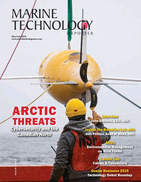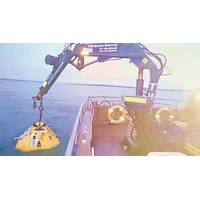
Finding Monsters on the Ocean Surface
ratio of depth to wavelength is used as a parameter to differentiate between long and short waves. Tsunamis and storm surges are typically very long waves, so they are considered shallow water waves. Storm waves and rogue waves are much shorter in wavelength relative to ocean depth. The west coast of Ireland is a perfect location to observe extreme waves, especially when it comes to storm waves and rogue waves. Indeed, Atlantic swells propagate eastward toward the coastline of Ireland. Depressions from the Atlantic regularly bring very unsettled weather across Ireland. A few weeks ago, post-tropical
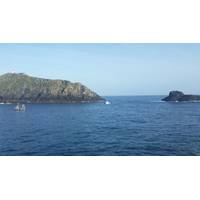
Acoustic Technology Aids Search for Downed Helicopter
for the wreckage of an Irish Coast Guard helicopter which crashed into the Atlantic earlier this year killing all four crew members, was supported with underwater locating equipment from Sonardyne International Ltd. Within hours of rescuers arriving at the scene of the accident off the west coast of Ireland, Sonardyne Scout USBL (Ultra-Short BaseLine) and ROV-Homer acoustic tracking and relocation systems, owned and operated by the country’s Marine Institute, had detected emergency signals being transmitted from the aircraft’s flight data recorder (FDR). Using an ROV, search teams
Bibby Offshore Wins Shell Subsea Deal
Natural Gas field in the North Atlantic Ocean. The first contract, completed in June this year, saw Bibby Offshore’s construction support vessel Olympic Ares - equipped with Quantum Work Class and SeaEye Cougar Inspection Class ROVs - perform subsea inspections 83km off the North West coast of Ireland, in water depths of approximately 360m. The 40 day campaign involved pipeline survey inspection work on a 83km long 20” gas pipeline, and internal wellhead and manifold fault diagnostics, structural inspection and cathodic protection measurements, to ensure optimum levels of
5,400km Subsea Cable to Connect America, Europe
cable system. AEConnect is scheduled to be ready for service in December 2015, as the latest transatlantic subsea fiber optic cable system connecting North America to Europe with unprecedented capacity and reliability. AEConnect will land in Shirley, NY and Killala on the West Coast of Ireland, spanning more than 5,400 km with stubbed branching units for future landings, and will use CeltixConnect, an Irish Sea subsea cable wholly owned by AquaComms, to provide extended connectivity to London and greater Europe. AEConnect will utilize the latest optical technologies
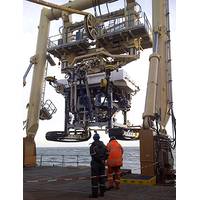
Fugro Wraps Up Gwyn t Môr Cable Work
. Gwyn t Môr is the second wind farm project where the Q1400 trenching system has been used when soils have been beyond the capabilities of standard jet trenching systems, and this follows on from a busy 2013 with completion of four successful Oil and Gas trenching projects one off the West Coast of Ireland and three in the North Sea. “We have experienced outstanding cooperation with the Fugro team throughout the Gwynt y Môr project” said Jimmy Laursen, Project Manager at CT Offshore A/S. “We met many challenges, especially with the demanding soil conditions on the
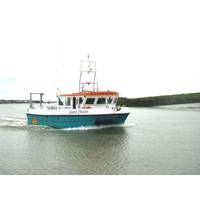
Blyth Workcats Delivers New Dive Boat
Blyth Workcats of Canvey Island, U.K. has delivered a new 11-meter dive boat to the Mevagh Dive Center in County Donegal on the west coast of Ireland. The new boat has now begun work transporting groups of up to 12 divers to sites along the Atlantic coast of Ireland where numerous wrecks make it an interesting but challenging region for recreational divers. The Laura Dean is powered by two Iveco N67 420 hp engines and features a hull design developed for optimal performance while also maintaining the Blyth Workcat’s reputation for tough reliability and exceptional sea-keeping in extreme
European Commission Finances Renewable Energy Projects
grid-connected tidal current turbines will be installed in deep water in the Sound of Islay off the west coast of Scotland. The tidal turbine technology will have a 3-bladed, seabed mounted design to deliver the overall net capacity of 10 MWe. Ireland Ocean West Wave A project located off the west coast of Ireland plans to demonstrate the potential of scaling up wave energy. Six wave energy capture devices will be placed at a depth of 15 metres. A prototype has already been tested at the European Marine Energy Centre (EMEC) in Orkney. The results of recent design changes and tests of an improved 800
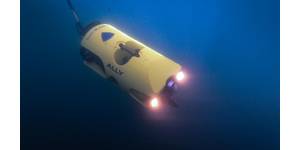
 February 2025
February 2025


